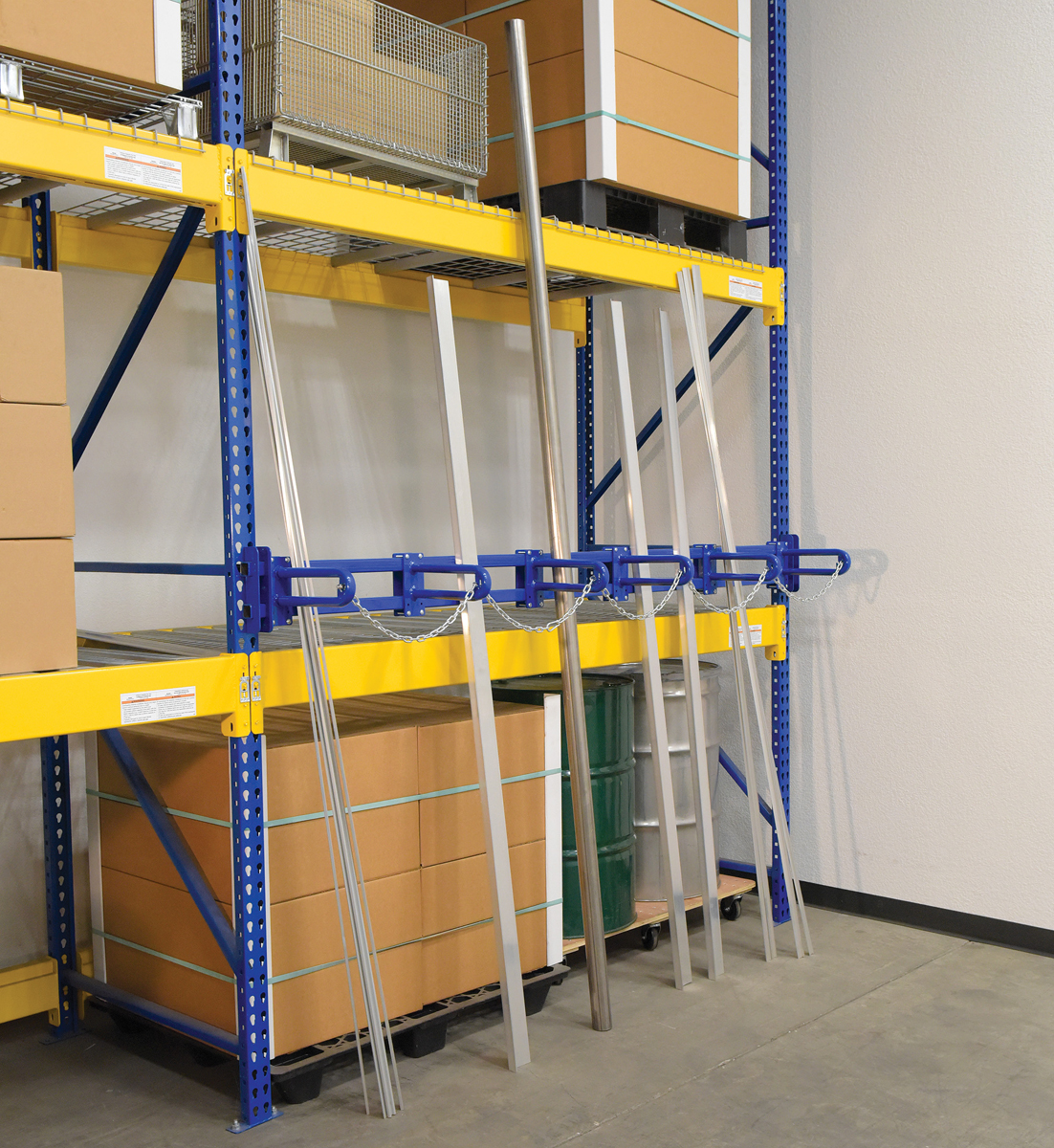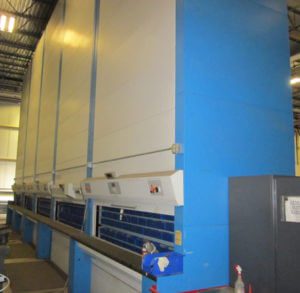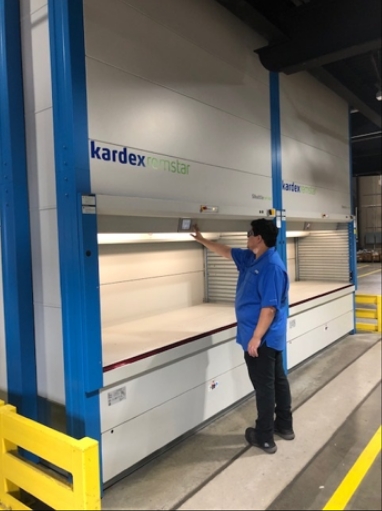In warehouses, manufacturing plants, and distribution centers, efficient use of space is critical. Two of the most popular high-density vertical storage solutions are vertical carousel storage systems and vertical racking systems. Both maximize vertical space, reduce wasted square footage, and improve inventory organization — but they function differently and are best suited for different types of operations.
This guide will compare these systems in detail, so you can decide which one is the right fit for your facility.
What Is Vertical Carousel Storage?
A vertical carousel storage system is a motorized, automated unit that stores items in a series of carriers or shelves that rotate vertically, similar to a Ferris wheel. When an operator selects an item from a control panel, the carousel automatically brings the correct shelf to an ergonomic access point.
Key features:
Automated retrieval at operator height
Enclosed structure for dust protection and security
Configurable carriers for bins, tools, or small parts
Common uses:
Small parts storage in manufacturing
Pharmaceuticals and medical supplies
Electronics components and delicate equipment
Example in action:
A defense contractor that manufactures aircraft components uses vertical carousel storage to house small but high-value parts like avionics modules. By keeping them in a dust-free, climate-controlled unit with restricted access, they not only preserve quality but also reduce loss from misplacement or mishandling.
If you’re evaluating whether a carousel fits your workflow, our guide Is a Vertical Carousel Right for Your Warehouse? offers a detailed breakdown of benefits and limitations.
What Is Vertical Racking?

Vertical racking refers to a fixed, non-automated storage system where inventory is placed on static shelving or racks arranged vertically. While it doesn’t have automated movement like a carousel, it’s highly customizable and can be adapted for pallet storage, long items, or bulk materials.
Key features:
Static structure, often adjustable in height
Can store pallets, boxes, or large equipment
Compatible with forklifts or manual picking
Common uses:
Palletized goods storage
Long and bulky item storage (pipes, lumber, metal bars)
High-volume SKUs accessed by forklifts or order pickers
If your operations require more advanced retrieval capabilities, you might explore AS/RS systems or automated shelving systems for enhanced efficiency.
How They Work: Movement vs. Manual Access
The biggest difference between these systems is how inventory is accessed:
| Feature | Vertical Carousel Storage | Vertical Racking |
|---|---|---|
| Movement | Shelves rotate automatically to bring the item to the operator | Items remain stationary; operator retrieves them manually or with equipment |
| Access Method | Push-button controls with computerized inventory tracking | Forklifts, ladders, or manual picking |
| Retrieval Speed | Very fast for small items; minimizes walking and searching | Dependent on aisle location and material handling equipment |
| Ergonomics | Excellent — no bending, climbing, or stretching | Variable — workers may need to reach, lift, or climb |
Space Efficiency: Which Stores More in Less Space?
Vertical Carousels
Store items in a compact footprint, often saving up to 60–75% of floor space compared to traditional shelving.
Best for smaller parts and items with consistent picking patterns.
Vertical Racking
Uses vertical space but often requires wide aisles for forklifts or pallet jacks.
Can store heavier and larger items than a carousel, but isn’t as space-efficient for small SKUs.
Inventory Management & Security
One of the advantages of vertical carousel storage is that it integrates easily with warehouse control systems and automated storage systems. Operators can scan items in and out, track usage in real time, and even limit access to certain employees for security purposes.
Vertical racking can be integrated into a WMS as well, but picking is typically manual, making it harder to enforce strict access controls without additional physical security measures.
Cost Considerations
Vertical Carousels
Higher upfront cost due to automation and integrated controls.
Long-term savings in labor, floor space, and inventory accuracy.
Potential ROI in 12–24 months for high-volume operations.
Vertical Racking
Lower upfront cost and simple to install.
Minimal maintenance requirements.
ROI depends on warehouse throughput and storage density needs.
To better understand the return on investment for these systems, check out our vertical lift module ROI guide or run the numbers yourself with our ROI calculator.
Industry Applications
Industries where vertical carousels shine:
Pharmaceuticals & Healthcare – secure, dust-free, climate-controlled storage for medicines and devices.
Electronics – static-free handling and protection of delicate components (electronic parts storage).
Aerospace & Defense – secure high-value parts with restricted access (aerospace storage solutions).
Industries where vertical racking excels:
Construction Materials – easy access to bulk and long materials.
Automotive – palletized tires, engines, and large parts.
Food & Beverage – bulk storage of palletized goods in ambient or cold storage (vertical cold storage).
When to Choose Vertical Carousel Storage
A vertical carousel is ideal if:
You store small, high-value, or delicate parts.
Picking accuracy and speed are top priorities.
You need secure, dust-free storage.
Floor space is limited but ceiling height is available.
When to Choose Vertical Racking
Vertical racking is ideal if:
You store large, bulky, or heavy items.
You rely on forklifts for material movement.
Your picking frequency is lower, or items are stored in bulk.
You need a cost-effective solution without automation.
If budget allows, pairing vertical racking with vertical lift modules can significantly improve picking speed for smaller, high-turnover inventory.
Combining Both Systems
Many warehouses find the best results by using both systems together:
Vertical carousel storage systems for small parts, tools, and fast-moving SKUs.
Vertical racking for pallets, long goods, or bulk materials.
This hybrid approach ensures that every type of inventory is stored in the most efficient way possible.
Making the Decision: Checklist
When deciding between vertical carousels and vertical racking, ask yourself:
What is the average size and weight of my items?
How often are items picked per day or week?
Do I need secure, restricted access storage?
Is floor space limited in my facility?
Do I have budget for automation now, or later?
Do I want full integration with automated warehouse systems?
Conclusion
Choosing between vertical carousel storage and vertical racking comes down to the nature of your inventory and the needs of your operation. Carousels excel in high-accuracy, space-limited environments, while vertical racking is versatile, cost-effective, and ideal for larger items.
For many facilities, a combination of both provides the best balance of speed, storage density, and flexibility.
Ready to explore your options?
At Vertical Storage USA, we help facilities design and implement automated vertical storage systems that maximize efficiency and ROI. Whether you’re considering a vertical carousel, vertical racking, or both, our team can guide you from planning to installation.
📩 Contact us today to schedule your free warehouse storage consultation.




